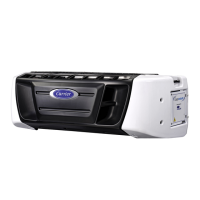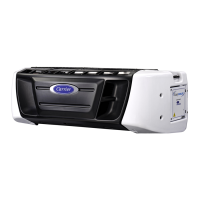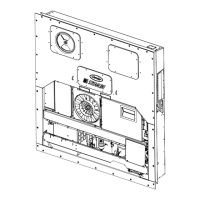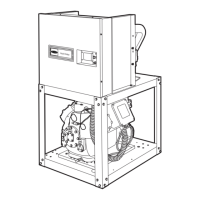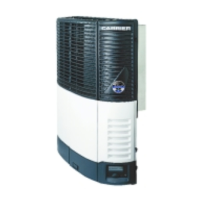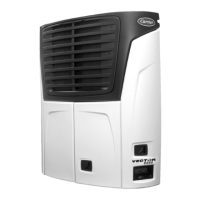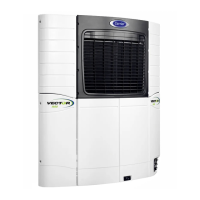62-11863 5-4
b. Replacing Coolant
Coolant is an acid base liquid and harmful for human contact. Wear proper protective gear:
chemical-safe gloves and eye protection when working with refrigerant. Allow time for coolant
to cool and for pressure to release before the cap is removed from the radiator.
1. Drain coolant by removing lower radiator hose and radiator cap.
To avoid damage to the earth’s ozone layer, use a refrigerant recovery system whenever removing
refrigerant.
2. Install hose and fill system with clean, untreated water to which any proprietary radiator cleaner should be
added (six ounces - dry 151 grams to one gallon = 3.78 liters) of water.
3. Run engine for the time recommended by the cleaner product used and drain system while warm.
4. Rinse system three times after it has cooled down. Refill system with water.
5. Run engine to operating temperature. Drain system again and fill with treated water/antifreeze.
c. Checking Radiator Operation
1. Visually check the cooling system, especially the hose between radiator and coolant bottle.
2. Verify coolant level inside the radiator and top off if necessary.
3. Power up the unit.
4. Run engine to operating temperature until coolant level in coolant bottle increases (flow from the radiator to
the coolant bottle).
5. Stop the unit and verify that coolant decreases inside the coolant bottle (flow from the coolant bottle to the
radiator).
5.2.2 Changing Lube Oil and Lube Oil Filters
After warming up the engine, stop the engine, remove drain plug from oil reservoir, and drain engine lube oil.
When changing oil filters, the new filters should be primed with clean oil. If the filters are not
primed, the engine may operate for a period with no oil supplied to the bearings.
Replace filter(s), lightly oil gasket on filter before installing, and add lube oil (refer to Section 2.7.1 and Section
5.5). Warm up engine and check for leaks.

